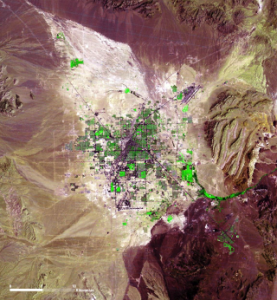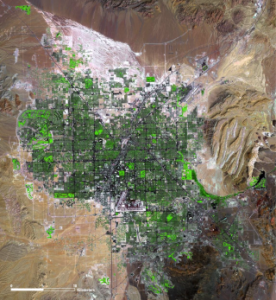 The Association of American Geographers (AAG) held their annual meeting March 22-27 in Las Vegas, Nevada. Gustavus geographers Mark Bjelland, Bob Moline and Anna Versluis attended. Mark chaired several sessions on “Reflections on the Geography of Religion” and presented a paper titled Congregations and the Geographies of Religious Diversity. Anna presented a paper titled Highlands Management in a Flood-prone Watershed: A Multilevel Model Tests for Differences between Upstream- and Downstream-residing Farmers.
The Association of American Geographers (AAG) held their annual meeting March 22-27 in Las Vegas, Nevada. Gustavus geographers Mark Bjelland, Bob Moline and Anna Versluis attended. Mark chaired several sessions on “Reflections on the Geography of Religion” and presented a paper titled Congregations and the Geographies of Religious Diversity. Anna presented a paper titled Highlands Management in a Flood-prone Watershed: A Multilevel Model Tests for Differences between Upstream- and Downstream-residing Farmers.
For many years, Las Vegas was one of the fastest growing urban areas in the country. Below, Landsat satellites images of Las Vegas illustrate how rapidly this urban area grew from 1973 to 2006. More recently, population growth in Vegas has slowed–in large part because of the economic crisis. (The area has an unemployment rate of nearly 10% and has been hit hard by mortgage foreclosures). In 2008 Las Vegas had their smallest annual population increase in nearly 20 years. (Images courtesy of USGS, NASA and Goddard Space Flight Center.)

In 1972, Las Vegas had a population of 358,000.

By 1991, the population had grown to 937,000 persons.

By the year 2000, Las Vegas' population exceeded 1.5 million people.

By 2006, Las Vegas had over 2 million people.